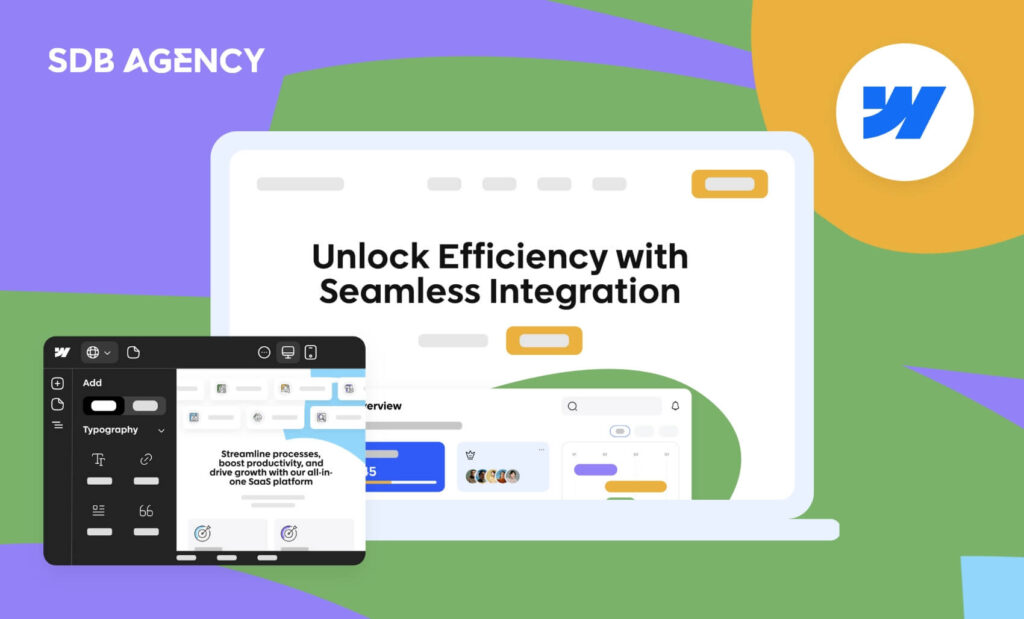The Importance of Mobile Optimization for SaaS Websites

In today’s digital landscape, where most users access the internet through their mobile devices, optimizing your SaaS platform for mobile isn’t only an option but a necessity.
Nowadays, SaaS companies must focus on mobile technology and SEO strategies. This is because mobile optimization directly influences the user experience and search engine rankings, which are important for the success of any SaaS business.
Due to Google’s mobile-first indexing, your SaaS website’s mobile version will become the primary version for ranking purposes. This shows how important it is for SaaS platforms to optimize their mobile sites to meet search engines’ guidelines and user expectations.
What is mobile optimization?
Mobile optimization involves designing your website to look and function properly on mobile devices. This process includes ensuring your site is responsive and automatically adjusts to any screen size, including smartphones or tablets.
This also involves optimizing site speed and navigation, as users expect quick loading times and to find what they’re looking for without hassle.
Also, besides making your site smaller to fit on mobile devices, it’s important to adjust the layout and size to fit these smaller screens. Mobile users are usually on the go, so your content must be easily digestible and relevant.
Why is mobile optimization crucial for SaaS SEO?
For SaaS companies, mobile optimization is vital for success due to several reasons:
- It directly impacts your site’s rankings in the search engine results (SERPs).
- If your SaaS website isn’t optimized for mobile, it may rank lower, which makes it harder for customers to find your products.
- Mobile optimization affects UX metrics like bounce rate and session duration, which search engines consider when ranking websites.
By offering a seamless mobile experience, you’re improving your SEO and elevating user satisfaction, which leads to higher conversion rates and customer retention. This alignment between your users’ needs and SEO best practices makes mobile optimization a crucial component for the success of your SaaS website.
5 key strategies for mobile success for SaaS
Optimizing your SaaS platform for mobile requires an all-around approach that consists of several strategies. These strategies are designed to improve both the user experience and your site’s technical performance, ensuring that it meets the criteria set by search engines.
Here are the key strategies for mobile success for SaaS businesses.
1. Implement responsive design
A responsive design is the core of any mobile optimization.
This approach ensures that your SaaS website automatically adjusts its content, layout, and functionalities to fit any screen size. Responsive design can provide a seamless user experience across every device.
The key elements include:
- A flexible grid-based layout that adjusts itself to any screen size.
- Scalable images and media that load efficiently and ensure clarity.
- Touch-friendly navigation elements that make it easy to use for touch-screen devices.
2. Speed optimization
Mobile users expect your website to load fast.
Speed optimization is vital for keeping your visitors engaged and reducing bounce rates. Here are ways to improve site speed:
- Minimize HTTP requests by reducing several elements on your pages.
- Compress images and files to speed up loading times.
- Use browser caching to store elements on users’ devices that offer faster access on return visits.
- Reduce latency by implementing a Content Delivery Network (CDN).
3. Improve user experience (UX)
Creating a positive user experience on mobile devices is crucial for converting leads and retaining visitors. The areas to focus on include:
- Simplify navigation to help users seek the information they need quickly and efficiently.
- Optimize forms for mobile users to make filling out easier on smaller screens.
- Space out clickable elements to ensure users won’t accidentally click any of them.
4. Local SEO optimization
If your SaaS business serves specific geographic locations, local SEO is essential to mobile optimization. Mobile users usually have local intent, so optimizing for local SEO may drive targeted traffic to your site.
These strategies include:
- Optimizing and claiming your Google My Business listing.
- Adding local keywords to your site’s content and meta titles & descriptions.
- Build local backlinks and citations to elevate your local search presence.
Remember that these strategies aim to improve your SaaS business’s visibility in search results while providing an excellent user experience that will keep customers returning.
How do you optimize content for mobile?
Content optimization for mobile users is a vital SEO element that every SaaS company shouldn’t overlook. Due to mobile devices’ smaller screen size and on-the-go nature, you must craft and present content that will effectively engage mobile users.
Below are the approaches to optimizing your content for mobile users:
- Short and concise paragraphs: Avoid large blocks of text, which can be overwhelming on smaller screens. Split your chunk of text into shorter paragraphs to improve readability.
- Lists and bullet points: Organizing information into bullet points and numbered lists will make it easier for mobile users to digest.
- Engaging titles and subheadings: Eye-catching and informative headlines will grab users’ attention, while subheadings will guide them through the article.
Optimizing user experience (UX) on mobile
The user experience (UX) on mobile devices is vital for influencing user satisfaction and SEO rankings. A positive mobile UX encourages users to stay on your site longer, lowers bounce rates, and boosts engagement, all of which signal to search engines that your site offers value to users.
Consider the following strategies for improving mobile UX:
- Streamlined navigation: Simplifying your website’s navigation can make it easy for mobile users to find what they’re looking for with minimal effort.
- Speed optimization: Page load speed is crucial for mobile UX. Use tools like Google PageSpeed Insights to fix any speed issues.
- Design for touch: Make sure all buttons, links, and fields are easy to touch with a finger. Avoid placing elements close together to avoid accidental clicks.
Conclusion
In summary, optimizing for mobile in SaaS SEO is a complex process that requires continuous effort and adjustment.
By prioritizing the needs of mobile users and aligning your approach with mobile SEO best practices, your SaaS platform can enhance its visibility, engagement, and growth in the competitive online landscape.
Keep in mind that the aim isn’t just to draw in mobile users but to offer them an outstanding experience that fosters loyalty and drives conversions, ultimately ensuring the long-term success of your SaaS business.




